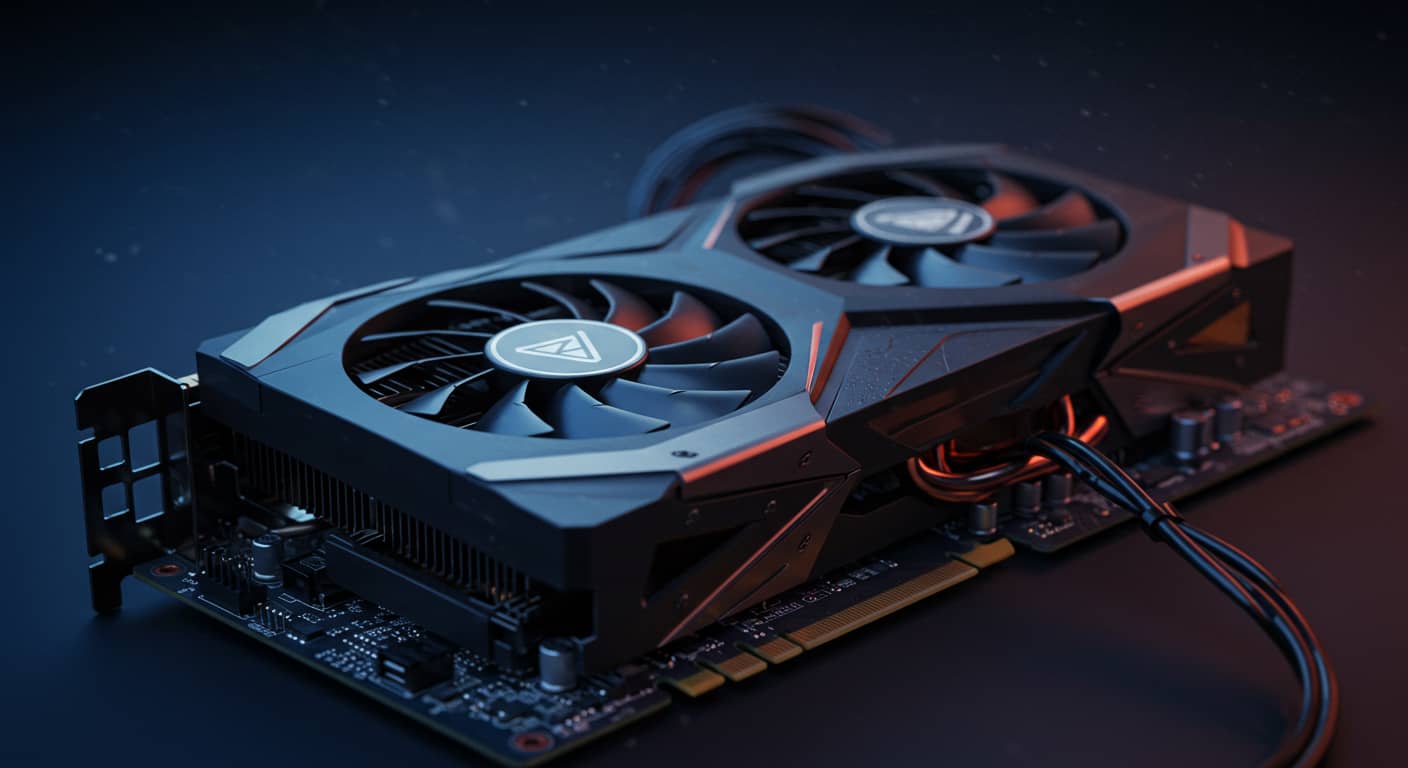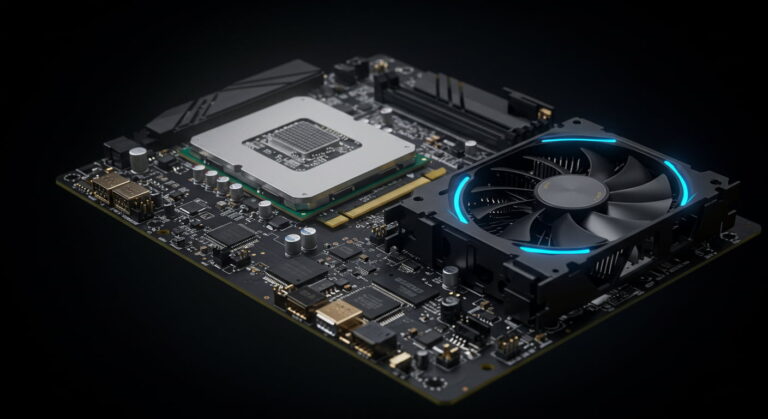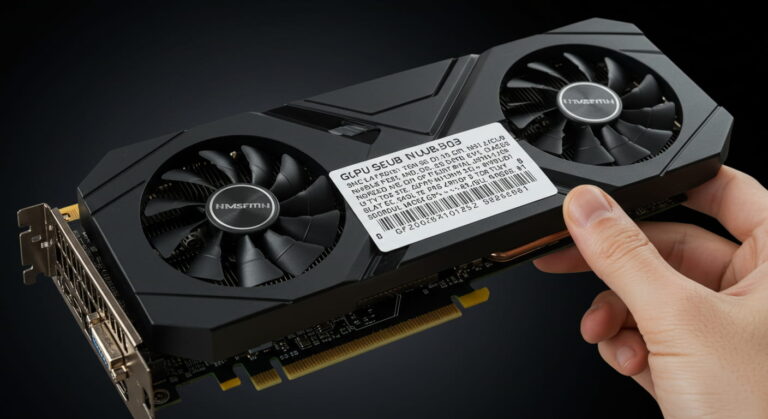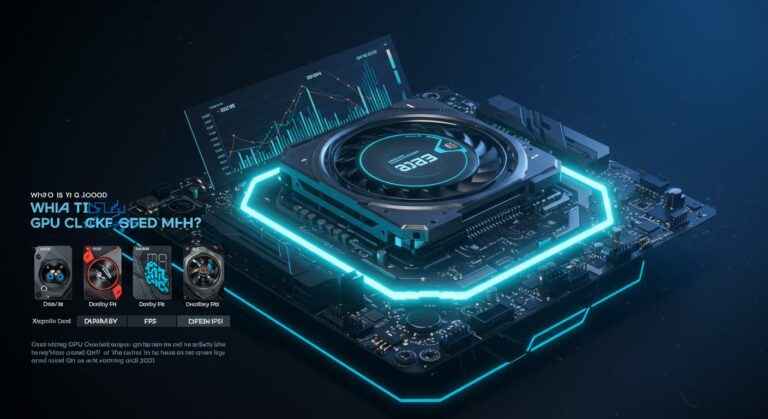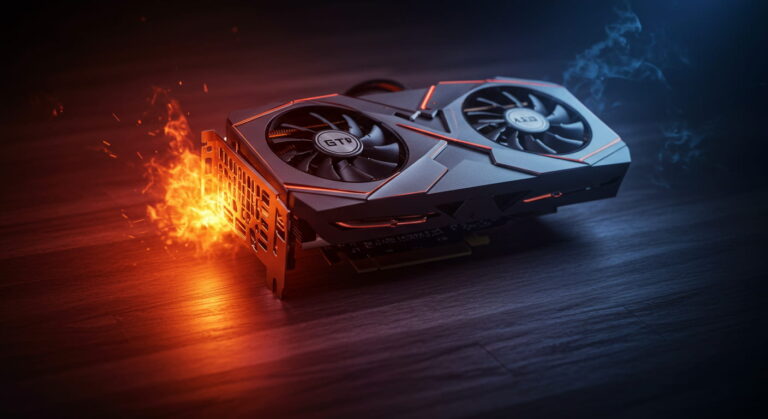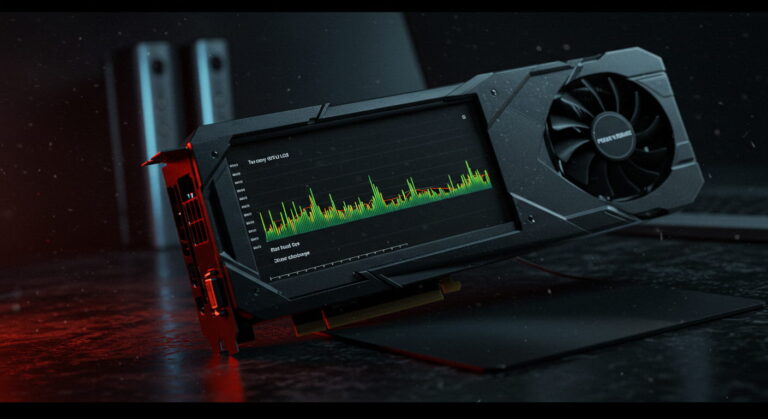How Hot Should My GPU Be?- Guide to Safe Temps and Performance!
Graphics cards (GPUs) are the powerhouses behind smooth gaming, creative video editing, and advanced 3D rendering. But with great power comes great heat. If you have ever asked yourself, “How hot should my GPU be?”, you’re not alone. Many PC enthusiasts and gamers worry about whether their GPU is running at a safe temperature, especially during long gaming sessions or demanding workloads.
The truth is, GPUs are built to handle heat, but only up to a certain point. Consistently running too hot can lead to performance drops, system crashes, and even shorten the lifespan of your card. Heat management is not just about preventing damage—it’s also about ensuring your GPU performs at its peak without throttling. In this complete guide, we’ll break down safe GPU temperatures, dangerous limits, and practical tips to keep your GPU cool and efficient. By the end, you’ll know exactly what numbers are safe, what’s risky, and how to monitor your system effectively.
What Temperature Should My GPU Be?
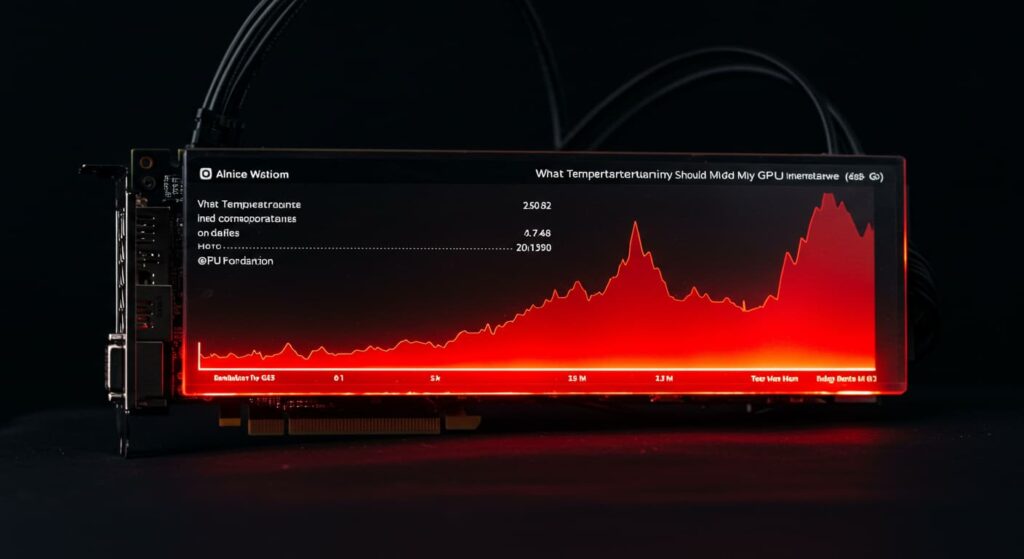
Your GPU’s temperature depends on what you’re doing. Idle temperatures will always be lower than gaming or rendering temperatures. Understanding these ranges will help you figure out whether your card is healthy or in danger. Knowing the right range also helps reduce unnecessary worry, since what may look hot to a beginner could actually be perfectly normal for modern GPUs.
What is the normal temperature of a GPU?
A normal GPU temperature during everyday use (web browsing, video streaming, office work) typically ranges between 30°C and 45°C (86°F to 113°F). When you start gaming or running demanding software, temperatures climb naturally into the 60°C to 85°C (140°F to 185°F) range.
If your GPU is in this range, there’s nothing to worry about. But if you notice higher numbers—like 80°C when simply browsing the web—that could mean your fans aren’t spinning properly, your case airflow is restricted, or background apps are stressing the GPU. Monitoring during different activities is the best way to know what’s normal for your setup.
What should be the normal temperature of a GPU on …
Normal GPU temperature depends heavily on workload:
- Idle (no heavy tasks): 30°C – 45°C
- Light work or casual gaming: 50°C – 65°C
- Heavy gaming or 3D rendering: 65°C – 85°C
- Stress tests/benchmarks: 85°C – 90°C (temporary, not ideal long-term)
So, when people ask, “What should be the normal temperature of a GPU on gaming or rendering?” the answer is generally under 85°C. Repeatedly hitting 90°C+ is a red flag and can cause throttling. A healthy card should operate comfortably below this ceiling.
Also read: How Much GPU Usage Is Normal?
What is considered a “good” GPU temperature?
A good GPU temperature is one that offers stable performance without putting unnecessary stress on your hardware. The golden rule is:
- Below 70°C: Excellent. Very safe for long sessions.
- 70°C – 80°C: Good. Normal for gaming or creative workloads.
- 80°C – 85°C: Acceptable but should not be sustained for too long.
- Above 85°C: Too hot, which can shorten GPU lifespan.
So, a good target is 65°C – 75°C under load. This range provides enough thermal headroom and keeps your fans quieter. Lower is not always better, though—straining fans to keep temps extremely low can increase noise and wear.
GPU Temperature… What is good?
When asking “What is good?” about GPU temperatures, it’s useful to think about scenarios. For example:
- While gaming, anything under 80°C is considered good.
- When idle, 30°C to 45°C is good.
- During intensive rendering, mid-70s is still good, though low 80s might be acceptable.
A good GPU temperature is not just about avoiding overheating; it’s about balance. Lower temps can improve stability and reduce wear on the cooling system, but too much fan speed can increase noise. Aim for temperatures that keep your GPU safe without stressing other parts of your system.
How Hot is Too Hot for a GPU?
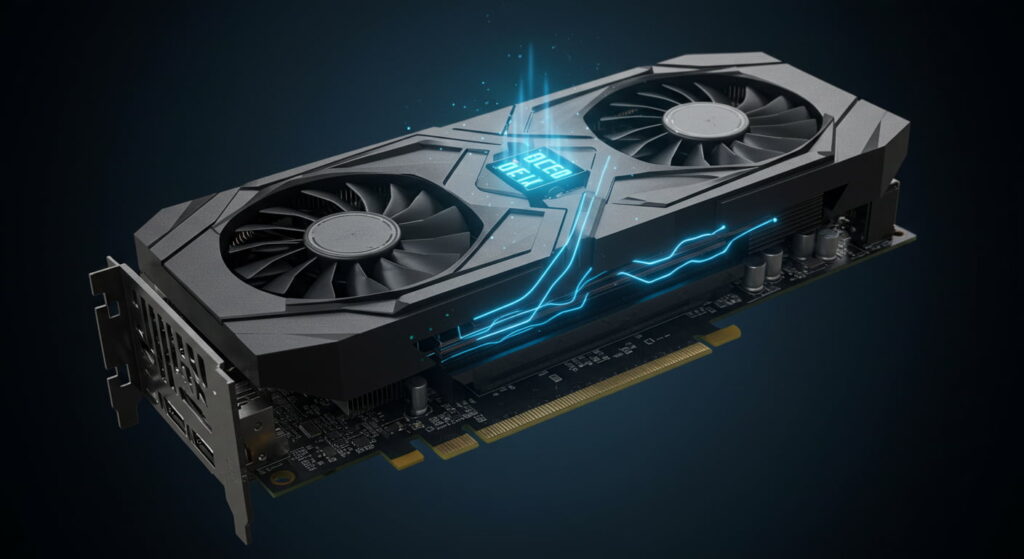
Heat is inevitable, but there is a clear point where it becomes too much. Knowing when your GPU is too hot helps you take action before damage happens. A GPU that constantly runs near its maximum safe temperature will not last as long as one that stays in a comfortable range.
How Hot is Too Hot for GPU? Check Your GPU Temperature
In general, 85°C is the upper limit for comfort. GPUs can run hotter, but consistently staying above 85°C means the cooling system is struggling. At 90°C – 95°C, most GPUs will throttle (reduce performance automatically) or even shut down to prevent permanent damage.
You can check GPU temperature with tools like:
- MSI Afterburner (popular and reliable)
- HWMonitor (system-wide monitoring)
- GPU-Z (detailed GPU stats)
- NVIDIA GeForce Experience or AMD Radeon Software (built-in tools)
Monitoring helps you know exactly how close you are to the danger zone, and lets you make informed decisions about cooling and workload.
Maximum GPU temperature limit (NVIDIA & AMD)
Different brands have different thermal ceilings:
- NVIDIA GPUs: Typically safe up to 88°C – 92°C
- AMD GPUs: Some models allow up to 95°C – 100°C
These are absolute limits—not recommended daily targets. While the card can technically survive at these temps, performance will drop, and the long-term health of the GPU may be compromised. Think of these numbers as “last resort” safety nets, not as everyday targets.
Average GPU temp under load
On average, a GPU under load (gaming, rendering, or 3D tasks) should sit between 65°C and 80°C. Some high-end models with better cooling may even stay in the low 60s. If you regularly see 85°C+, it’s a sign that something needs adjustment, like case airflow, thermal paste, or fan speeds.
Also read:How Hot is Too Hot for a GPU?
Safe GPU Temperature Ranges
Safe temperatures depend on usage. Gaming, idle time, and rendering workloads each have their own comfort zones. By understanding these ranges, you’ll be able to spot problems early and take preventive action.
Safe GPU temperature while gaming
During gaming, the safe range is 65°C to 80°C. If you have a high-end card with advanced cooling, your GPU may stay even cooler. For long gaming sessions, staying below 75°C is ideal.
If you’re consistently seeing 85°C+ while gaming, you should:
- Improve case airflow by adding or repositioning fans
- Clean dust filters and GPU heatsinks
- Adjust GPU fan curve using MSI Afterburner
- Reduce overclock settings if applied
Long-term gaming at high temps not only risks GPU damage but also makes your system louder due to constant high fan speeds.
Ideal idle temperature for GPU
When your computer is idle (not gaming or rendering), your GPU should stay between 30°C and 45°C. If idle temperatures rise above 50°C, something may be running in the background, or your fans might not be working as intended.
Keeping idle temps low means your GPU is cooling efficiently and will have more headroom once workloads increase. This is also a good way to gauge the effectiveness of your case airflow.
Why is My GPU Getting So Hot?
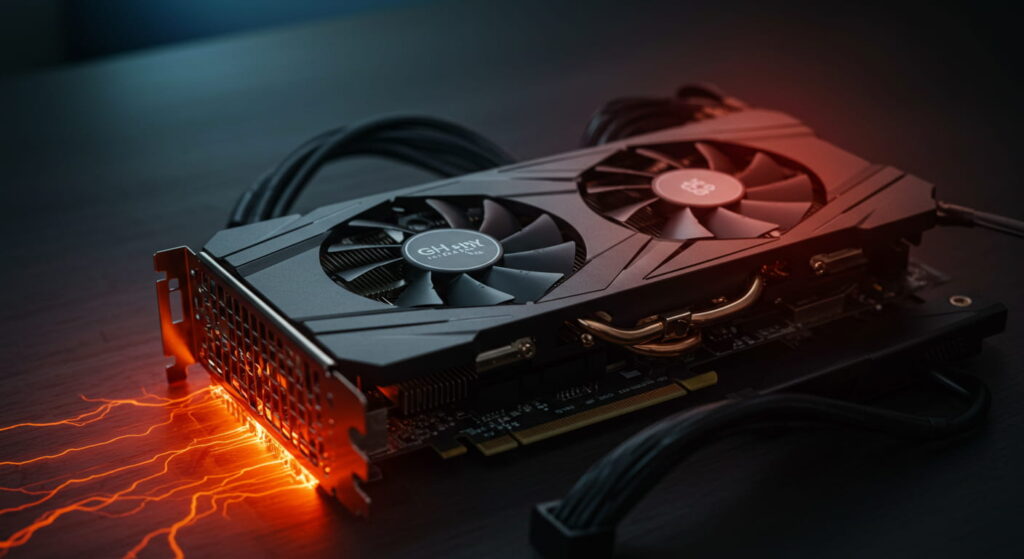
If you notice your GPU running hotter than expected, it’s important to understand the cause. Heat buildup is usually preventable with proper maintenance and good system design. Knowing the reasons behind rising temperatures helps you take the right corrective action.
Worry about GPU working temperature
GPUs are designed to run hot, so seeing numbers in the 70s or 80s isn’t automatically a problem. However, if your GPU constantly pushes past 85°C, it’s time to investigate. Long-term heat exposure can degrade thermal paste, damage fans, and reduce the overall lifespan of your graphics card. Even if your GPU isn’t crashing, constant exposure to high heat can slowly harm it over time.
GPU overheating symptoms and fixes
Signs that your GPU is overheating include:
- Sudden FPS drops
- Random shutdowns or crashes
- Fan noise ramping up unusually
- Graphical artifacts (strange colors or lines)
- Error messages or blue screens during games
Fixes:
- Clean out dust from your case and GPU fans.
- Improve airflow by adding intake/exhaust fans.
- Replace thermal paste on the GPU if it’s old.
- Adjust in-game settings to reduce stress.
- Consider undervolting to reduce heat output.
Addressing these issues early prevents lasting damage and ensures smoother, more stable performance.
How to Monitor and Control GPU Temperature
To keep your GPU safe, you need to monitor temperatures and apply cooling strategies. A proactive approach ensures you catch issues before they spiral into costly hardware replacements.
Also read: CPU GPU Compatibility
How to monitor GPU temperature easily
Monitoring GPU temps doesn’t require technical expertise. You can:
- Use NVIDIA GeForce Experience overlay or AMD Radeon Software overlay
- Install MSI Afterburner for real-time graphs and fan control
- Use Windows Task Manager (Performance tab) to see GPU temperature directly
These tools make it easy to keep an eye on your system, especially while gaming or benchmarking. Having real-time temperature graphs allows you to spot unusual spikes instantly.
Cooling methods to keep GPU safe
If your GPU is running too hot, try these cooling solutions:
- Improve airflow: Make sure your PC case has both intake and exhaust fans.
- Clean your PC regularly: Dust can block airflow and insulate heat.
- Reapply thermal paste: Over time, paste dries out and reduces efficiency.
- Undervolt your GPU: Lower voltage reduces heat while keeping performance stable.
- Consider liquid cooling: Enthusiasts often switch to water blocks for maximum cooling efficiency.
Combining these methods ensures your GPU runs cooler, quieter, and more efficiently, extending its lifespan.
FAQs About How Hot Should My GPU Be
1. How hot should my GPU be while gaming?
A safe range for gaming is 65°C – 80°C. Anything above 85°C could mean airflow issues or aggressive overclocking.
2. What is the maximum safe temperature for a GPU?
Most GPUs can technically handle 90°C – 95°C, but staying under 85°C is much better for long-term health.
3. How hot should my GPU be when idle?
Idle temps should sit between 30°C – 45°C. Higher temps may signal background apps, poor airflow, or fan issues.
4. Can high GPU temperature damage my card?
Yes. Running at high temperatures for extended periods can degrade thermal paste, wear out fans, and shorten GPU lifespan.
5. How do I check how hot my GPU is?
You can use tools like MSI Afterburner, HWMonitor, GPU-Z, or even Windows Task Manager (Performance tab).
6. How hot should my GPU be under load?
Under load (gaming, rendering, stress tests), a safe average is 65°C – 80°C, with brief spikes to 85°C being acceptable.
7. Why is my GPU getting too hot?
Common causes include dust buildup, poor airflow, dried thermal paste, or high ambient room temperature.
8. How can I lower GPU temperatures quickly?
Clean your PC, improve airflow, adjust fan curves, lower in-game settings, or undervolt your GPU.
9. How hot should my GPU be if it’s overclocked?
Overclocked GPUs naturally run warmer, but aim to stay below 85°C for stability and long-term safety.
10. Is liquid cooling worth it for GPU temps?
If you’re into heavy gaming, 3D rendering, or overclocking, liquid cooling can keep your GPU cooler (50°C – 65°C under load) compared to traditional air cooling.
Conclusion:
The answer to how hot should my GPU be is simple: aim for 30°C–45°C at idle and 65°C–80°C while gaming. Anything above 85°C is too hot and can harm performance and lifespan. Keep your GPU cool with good airflow, regular cleaning, and proper monitoring to enjoy stable performance for years.
Related post:
